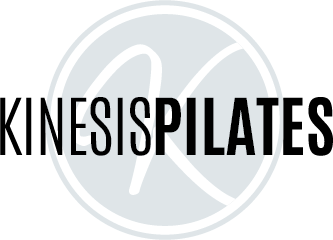In Pilates, we focus on organizing the mechanics of the body—how the bones and joints align, the balance of the muscles around the joints, our breathing mechanism. And we believe this organization creates a better performing, more aligned body.
I think the same is true of our minds. They can use some organizing and aligning. Instead of a little more of this muscle and a little less of that one, it might be a little more of this emotion and a little less of that one.
Try gratitude journaling. See if you can think of ten things to be grateful for each day.
For a long time, the mind and body have been thought of as separate. We now know that’s not true at all. The mind influences the body and vice versa. The emotions you feel, the thoughts you have, they create chemical signals that affect every cell in your body. This is how we “feel” emotions, with the help of hormones and neurotransmitters released in response to them.
This means that a potent way to organize and clean up your body is to clean up your thoughts and emotions. This year, I stumbled upon one of my all time favorite books: Letting Go by David Hawkins. He takes the world of emotions and puts it into a framework that a more scientific mind like mine can appreciate. In fact, he assigns a number that represents its energy to various emotions. This helps you understand their impact on your body. For example, shame is the lowest of the emotions at only 20, guilt is 30, grief is 75, fear is 100, anger is 150. He classifies negative emotions as falling below 200.
I don’t know about you, but I don’t want to live in a Pilates organized body with a mind vibrating on the frequency of fear or anger. How do I rise above that? Dr. Hawkins places acceptance at 350, love at 500, and peace at 600.
The emotions with the highest energy, with the most positive biochemical impact on the cells and tissues of your body, are love and gratitude. In fact, the energy of these frequencies is so powerful that researchers have found it to create microscopically measured effects on water (The Hidden Messages by Masuro Emoto) as well as macroscopic effects (The Living Language of Water by Veda Austin). So not only do your thoughts and emotions create biochemical changes in your body via hormones and neurotransmitters (The Biology of Belief by Dr. Bruce Lipton), they also affect the water that comprises 60-70% of your body by weight and over 99% of you by molecular count.
So basically, your thoughts and emotions matter!
Eight months ago, I decided to create a consistent, dedicated gratitude practice. I resolved to write a minimum of ten things I was grateful for in a journal every night. Let me tell you—there were some nights that I really struggled. I could hardly come up with a few things to be grateful for that day. So busy was my mind with all that was wrong, I could hardly find anything right.
Struggling to feel love and thankfulness? My sweet dog is my go to for feeling more love and gratitude!
Within a couple months, finding ten things to be grateful for became easy. In fact, I could regularly get to 15-20 without trying. And then suddenly, the gratitude crept into my day. I wasn’t just thankful for things when I focused on it. I was thankful for things in the moment, and in the midst of difficult moments! When I slept only four hours before waking up in the middle of the night and struggling for the rest of the night to fall back asleep, I could genuinely be grateful for those solid four hours of sleep rather than focusing on how that was half of what I wanted.
I truly believe that this is making me happier. I don’t need circumstances to fall into place, I don’t need an exotic vacation, I don’t need my spouse to plan the perfect date, I don’t need elections to go my way. I am starting to find boatloads of things to be grateful for in my mundane, everyday life.
Try a gratitude walk. Commit to only thinking of things you’re grateful for on a walk. In nature, it’s easy to find things to appreciate.
Try it! If a gratitude journal is not your style, try a gratitude walk. I take my dog on a walk and the entire walk, I think of things I’m grateful for. Especially if you’re in nature, it’s amazing what you will find to appreciate. Or try a gratitude body scan. During my meditations, I will go body part by body part thanking it for all it does well. How often do we ever thank the things that work well in our body rather than focus on what hurts or is riddled with disease? Seriously. I’ve never thanked my left elbow for not giving me a single issue ever!
Once you get started, you’ll realize that there is so much to be grateful for, there’s not much space left in your mind for complaining, worrying, sadness, fear, irritability, judgement, annoyance, or anger. And that kind of mindfulness over your thoughts and emotions is more powerful than the kind that brings awareness to how you move in Pilates.
Like this subject and want to learn more? I highly recommend the book Thank and Grow Rich by Pam Grout.



